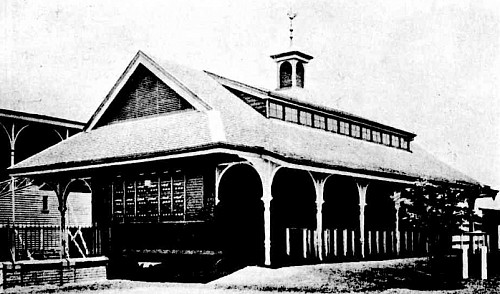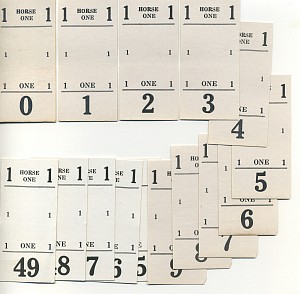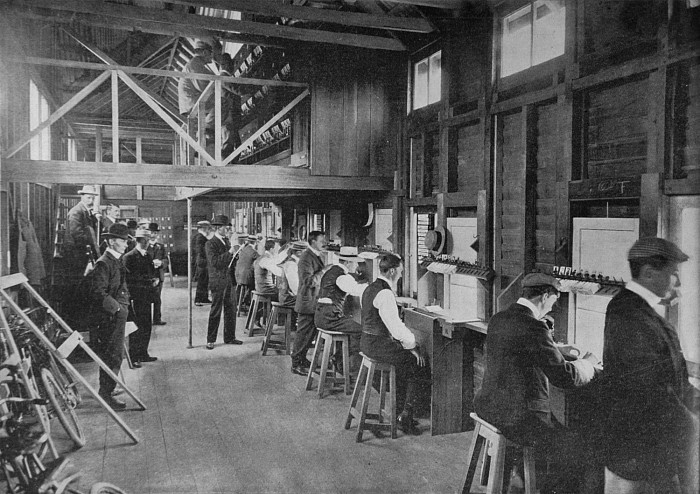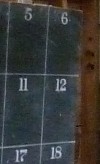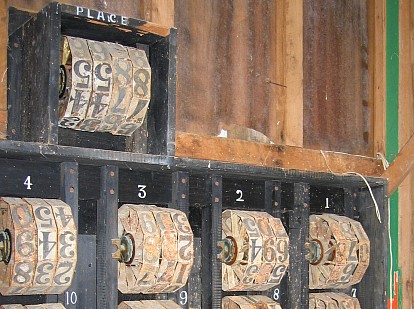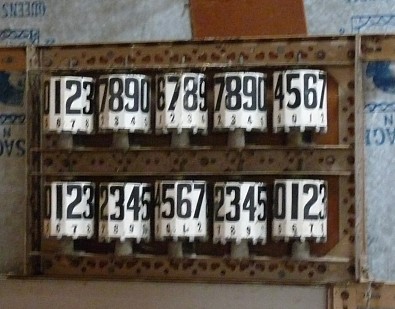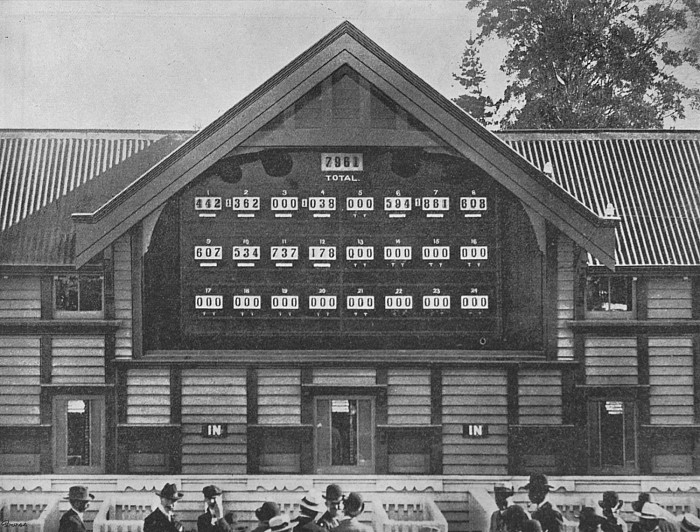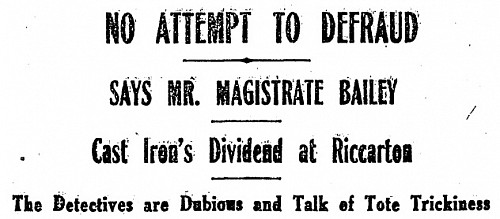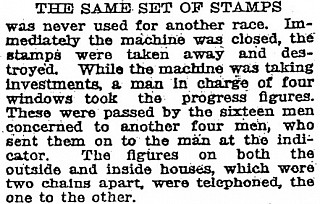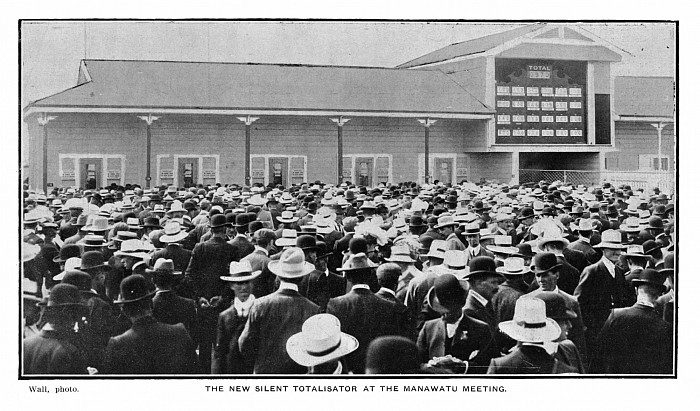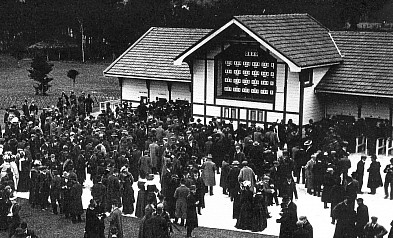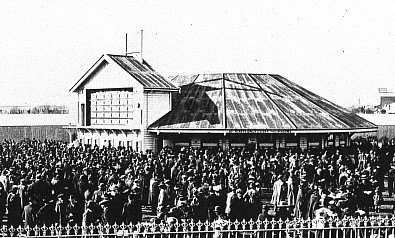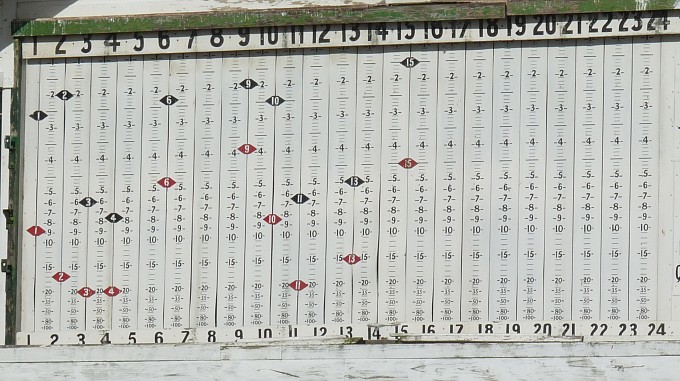Computer Science
Totalisators: Manual totalisators
In New Zealand the totalisators at most race courses were mechanized by 1960 so the memory of manual totes is fast fading. However, there are still people living who remember the manual totes operating. Additionally, there are quite a few photographs and many relics to be explored for clues.
We do not know where the manual tote came from, nor when it first appeared. In New Zealand the earliest reference is to the totalisator at Riccarton in 1902 - Ellerslie and Awapuni were later, likely 1906. It is possible that this idea came from Europe but, given that we recognise the great advance in what we are calling the manual tote was that the staff operating the tote disappeared into the machine building itself, there was a precedent in Brisbane, Australia. Mr Henry Hodsdon, already known as the inventor of a machine for starting horse races, was experimenting with totalisator machinery in 1898 and had a machine operating at Eagle Farm in that year. His machinery was, to modern eyes, rather "Heath Robinson" in that it depended for recording bets on metal "marbles" rolling down tracks inside the machine. However, the staff operating the machine were all inside the building with the machine itself, so this could have inspired others to do the same without the machinery. His 1900 tote house certainly looked similar to manual totes on this side of the Tasman:
A more-detailed description of Hodsdon's totalisators is available in volume 4 of The Rutherford Journal.
Reviewing the time critical functions of the totalisator:
- as tickets were sold the numbers of bets made on each horse were recorded at each ticket station
- the numbers for each horse were continually added together to give totals
- the horse totals were added to give a grand total
- the horse totals and grand total were continuously displayed so that they could be read by the crowd
There must have been many different ways of structuring this work depending on the experience and success of the managers. However, what follows should be considered typical.
Recording the number of tickets sold at each station may seem a burden on the sellers but a clever trick was widely used that simplified the task. Tickets were prepared in advance, in bundles of (say) 50 with horse numbers and large easy-to-read sequence numbers starting from 0. The piles of tickets were positioned so that they could be read by a human "computator" standing behind the seller. As tickets were sold they were removed from the top of the bundle for that horse and stamped with a stamp unique to that race. The sequence number on each pile showed how many tickets had been sold. These sample tickets are from the Riverton race course.
The first level of addition was performed by gentlemen standing behind the sellers. Each computator read the numbers of tickets sold, and formed totals for each horse for his group of sellers. In this image below, of the Riccarton totalisator in 1902, we can see the tickets above the sellers and the computators standing behind them. A closer look shows the horse numbers above the tickets.
There were multiple levels of computators. Those at the lowest level would pass their totals up to the next level where they were added together in turn. The totals might have been communicated on paper, or, if the next level computator was physically at a distance, by writing them in large figures on a blackboard. (In the above image there is a blackboard at the end of the room and on the right is part of a similar blackboard still in place at Riverton.) In a small totalisator the figures at this stage might be the final horse totals or, with larger number of ticket selling stations, there could be another level of addition again.
Finally, the totals for each horse were derived and they were in turn summed to give the grand total of all bets. These totals were made available to the operator of the display, likely on a blackboard. If the display was remote the figures could be phoned through. In the above image we can see the operator of the display at the top. These displays did not necessarily have any counting function. Here are some surviving displays at Hokitika on the left and Riverton on the right:
The above image of the Riccarton totalisator internals in 1902 was matched by a photo in the same article that showed the totalisator and its displays from the outside. Note how the display seems to have been "upgraded" with the inclusion of a special "thousands" extension for each total. The un-scratched horses are highlighted and the grand total seems to be correct!
Although we have no written record of how the manual totalisators were operated, there was relevant information given in court cases. The police were continually monitoring the operation of the totalisators, looking for infringements, and occasionally bringing the operators to court. The weekly scandal sheet "The New Zealand Truth" has accounts of two of these cases that were effectively defended and give nice insights into how the totalisators operated and let some of the leading figures of the day speak for themselves.
These accounts are available from "Papers Past". We will just give summaries and extracts here. The first case is from 30th June 1917, page 11:
This case involved an incident in the totalisator at Addington operated by McDougall, where the bets on one horse were displayed as 52 when there were actually 152 bets recorded. There were many details of the tote operation given in evidence with the final outcome of a token fine of two pounds. In his testimony George Hobbs, the display operator, told how he reads the numbers from the blackboard in sequence and displays them on the machine. He reveals that units digits are not displayed until the betting is complete but that each display could be incremented in the 10s position. In this case he overrode the mechanism and moved the 100s wheel by hand but put it in a position half way between 0 and 1.
The second case is from 16th February 1918, page 5:
This concerned a case where the final total number of bets shown on the display for the horse "Cast Iron" were 242 whereas the figure that was used for calculating the dividends was 262. A "lengthy statement concerning the interior workings of the Riccarton tote" was read and, after much discussion it was realised that "registering a bet on the totalisator" was not always the same as "displaying the bet" as there was a delay involved - there was a token one pound fine issued. However, in the process we are told that new unique stamps are issued for each race and destroyed when betting closes for each race. And, that in the case of this totalisator, there is one computator for each four sellers, four computators at the next level, and one total computator - a nicely balanced quaternary tree of 21 people. (We are also introduced to the term "computator" for those who do the addition.)
The record of the early buildings is rather spotty. There must have been some quite small totes to start with, perhaps like the 1902 Riccarton building which we saw above. Ellerslie got its first course-wide manual tote in 1906, as did the Awapuni course in Palmerston North:
However, most images that survive from the major race tracks show very large buildings. These often went through more than one stage of development as in these two stages at Trentham (NZ National Library) where the same display is carried forward from one building to the next.
The early tote buldings displayed total bets only, but later they changed to displaying expected dividends using a baromoter-type display. This required an additional stage in calculation, multiplying the grand total by a factor to remove tax and costs, then dividing this by the total for each horse. This would have been performed using a slide-rule or calculator. Here are the barometers still in use at Riverton, displaying the expected dividends for both win and place bets. Also, from the Kaikoura Museum a different type of barometer that displayed both win and place dividends on top of each other using strips of two different colours.
At the major race tracks the early buildings were eventually pulled down and replaced by new structures to house mechanical totalisators. At smaller tracks the mechanisation did not take place until the 1950s and involved transportable equipment. There still needed to be a building to house the ticket sellers and the totalisator management so that in many cases the manual totalisator building continued to be used. Even if it were not, leaving a building standing is cheaper than demolishing it and racing clubs usually had plenty of space so even abandoned buildings were left standing.
The result is that, although the tote buildings were destroyed at some tracks, at the majority of the smaller courses they are still there. Some have been adapted for other purposes, but the many are still used for selling tickets, although it does seems incongruous to see the TAB truck with its satellite dish parked next to a building from another era. At some tracks, such as at Riverton seen above, the barometers are still used to display expected dividends - this is just maintaining a tradition as there are plenty of television display screens to satisfy the needs of most punters.
Following are some sample images of totalisator buildings still standing in New Zealand. These are the ones where the display is still recognizable - there are others where the display has been destroyed.

